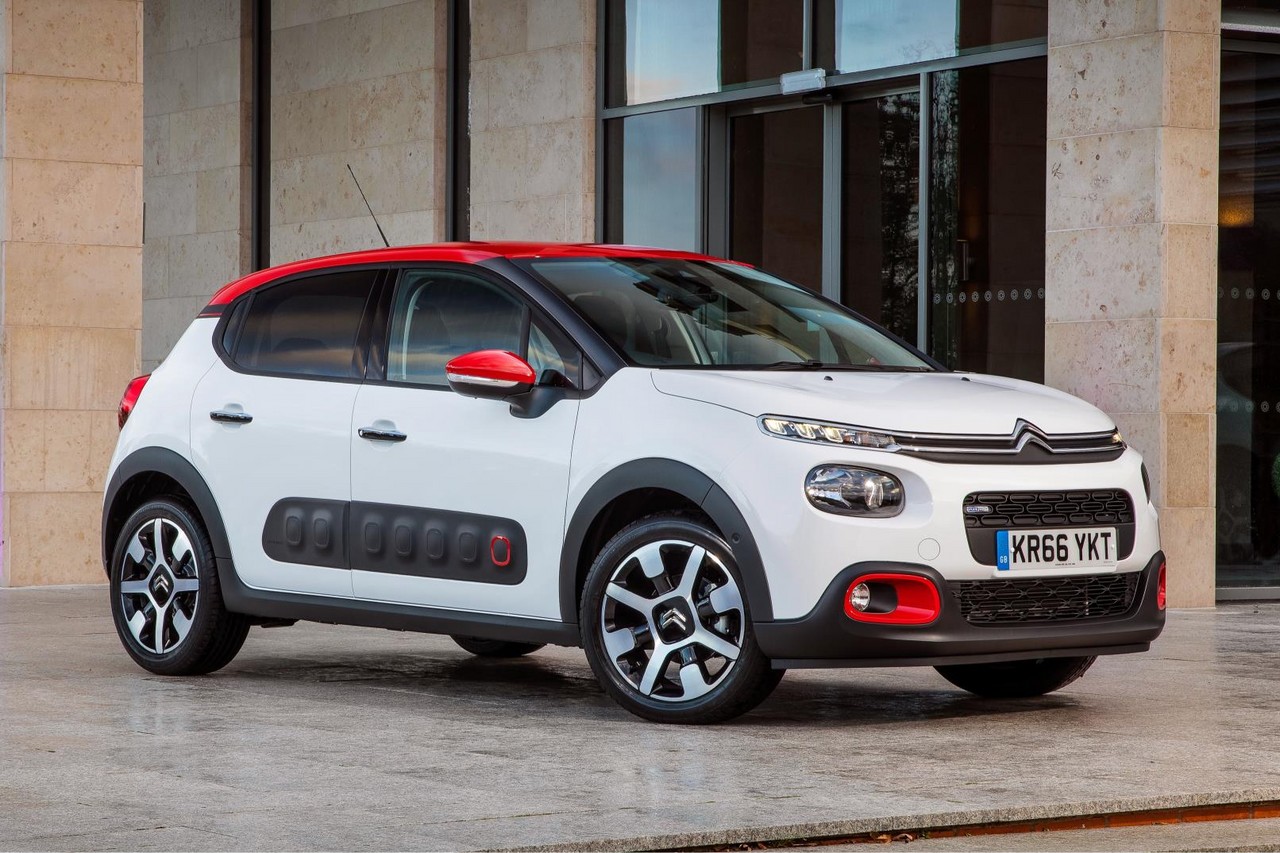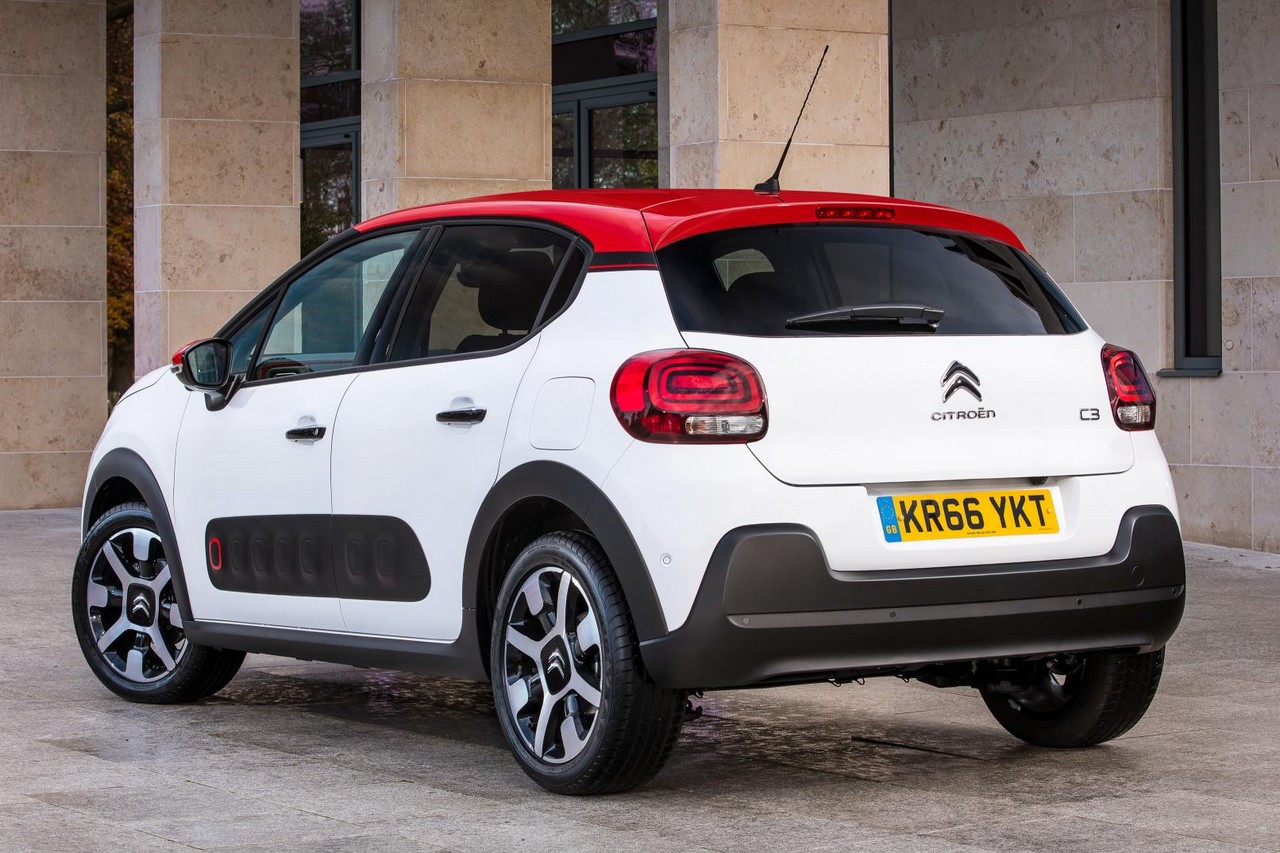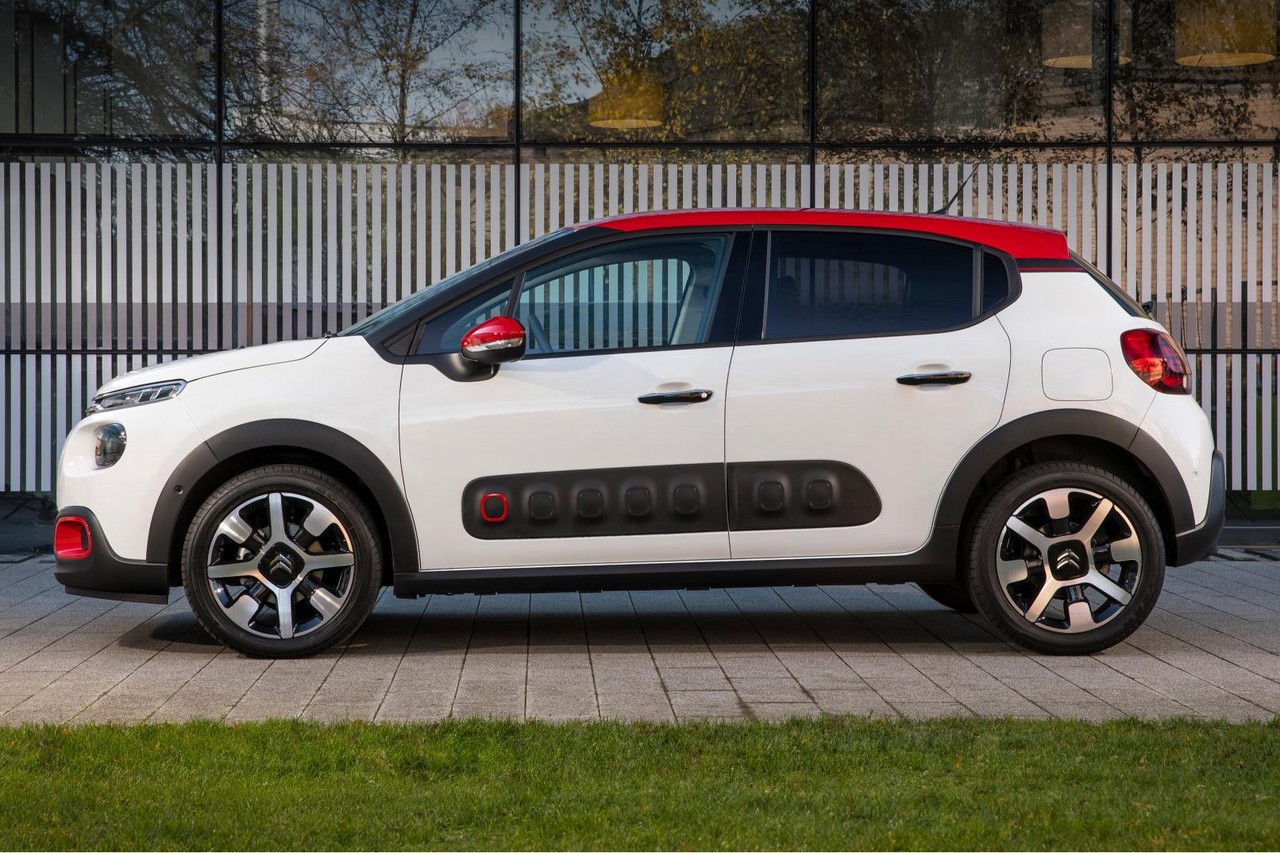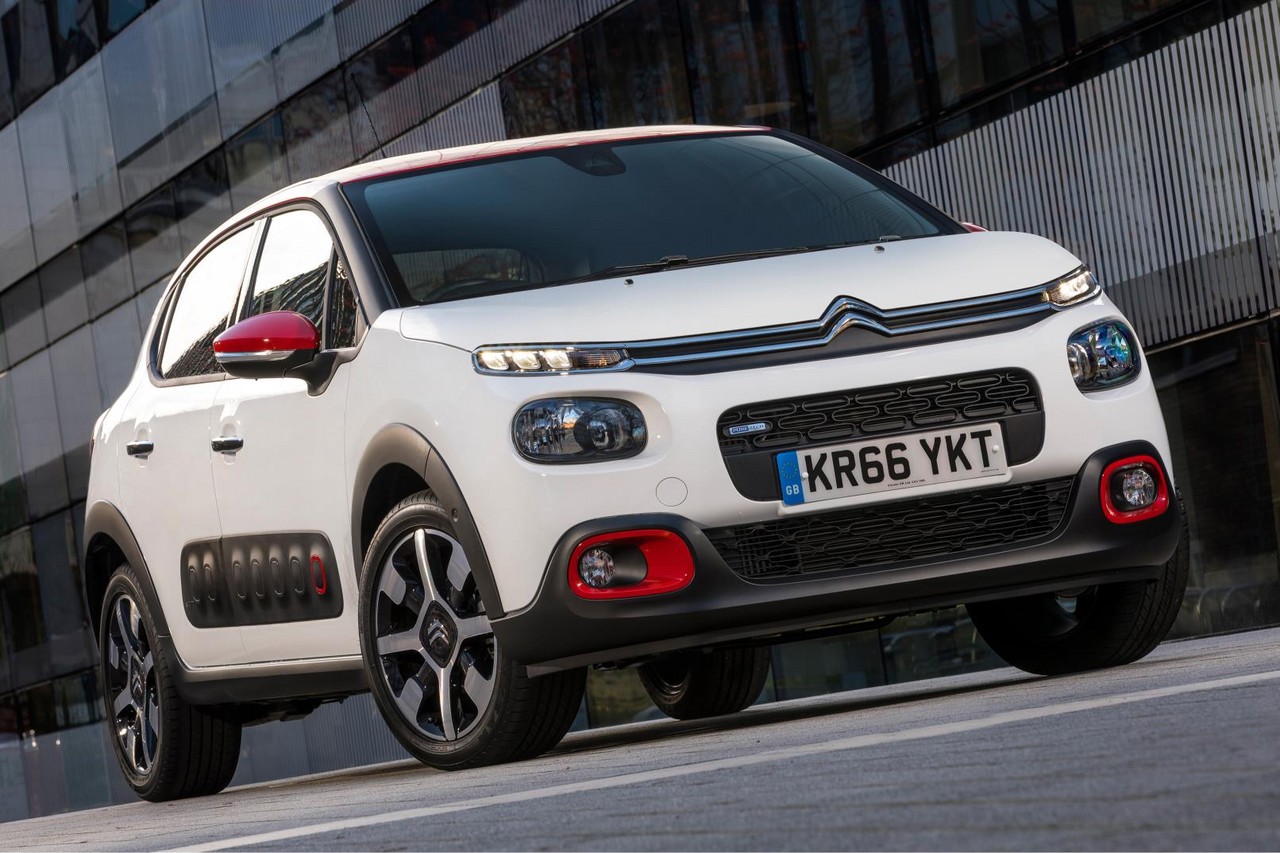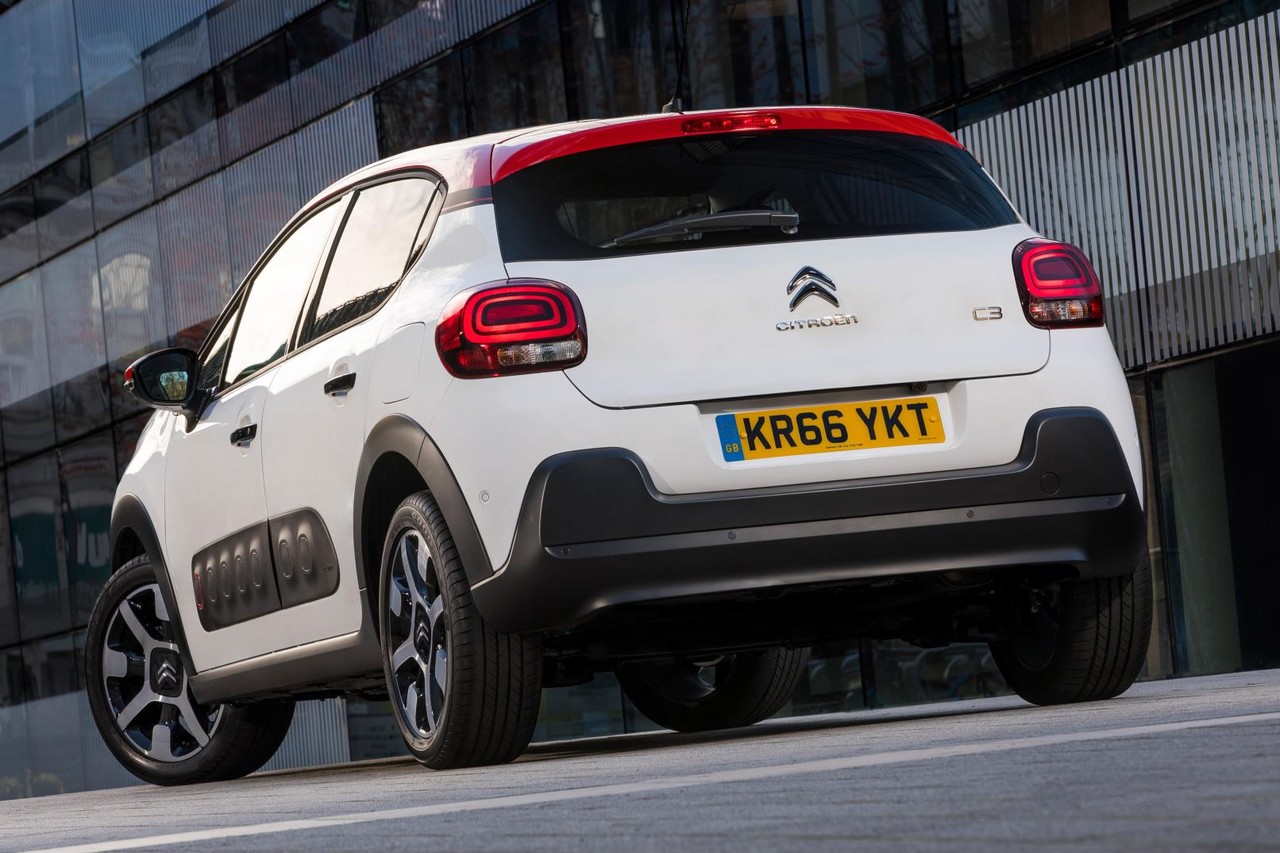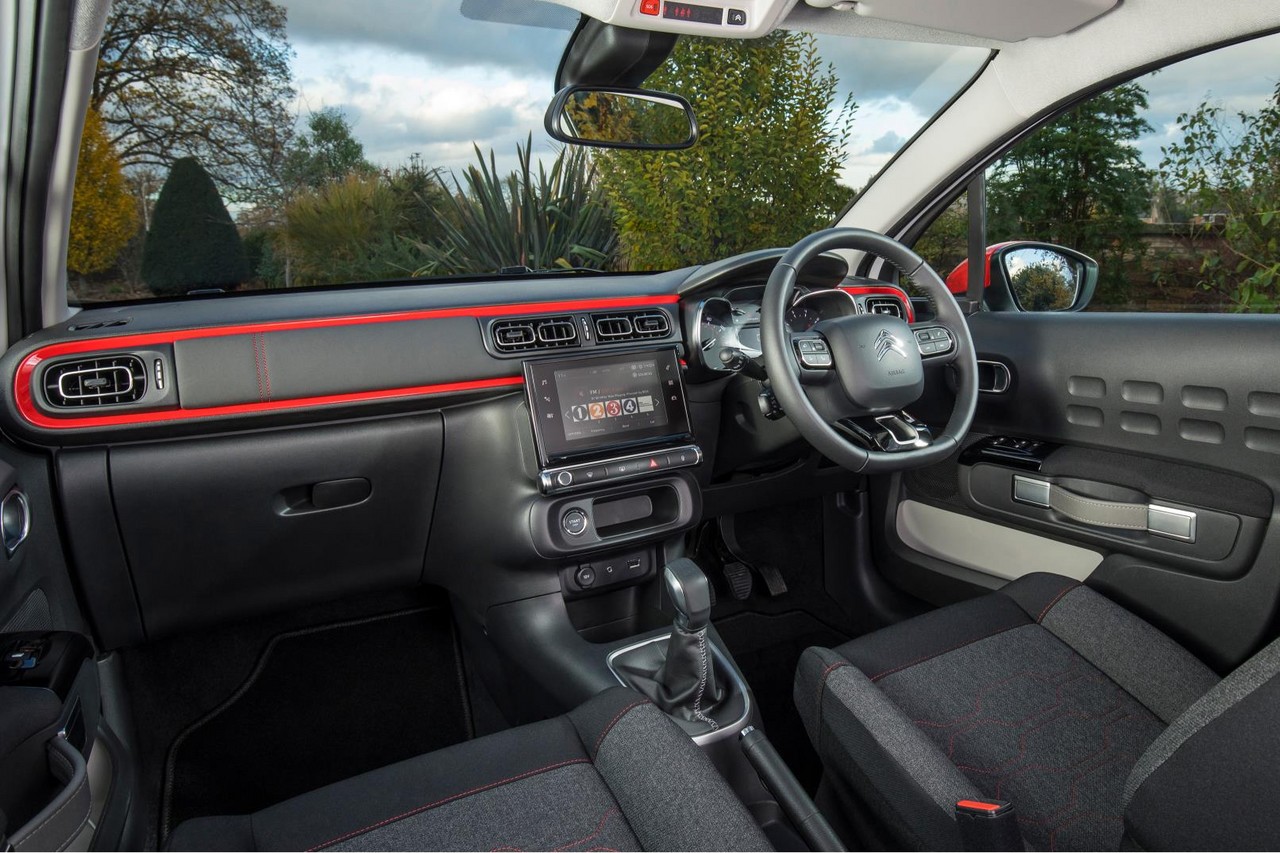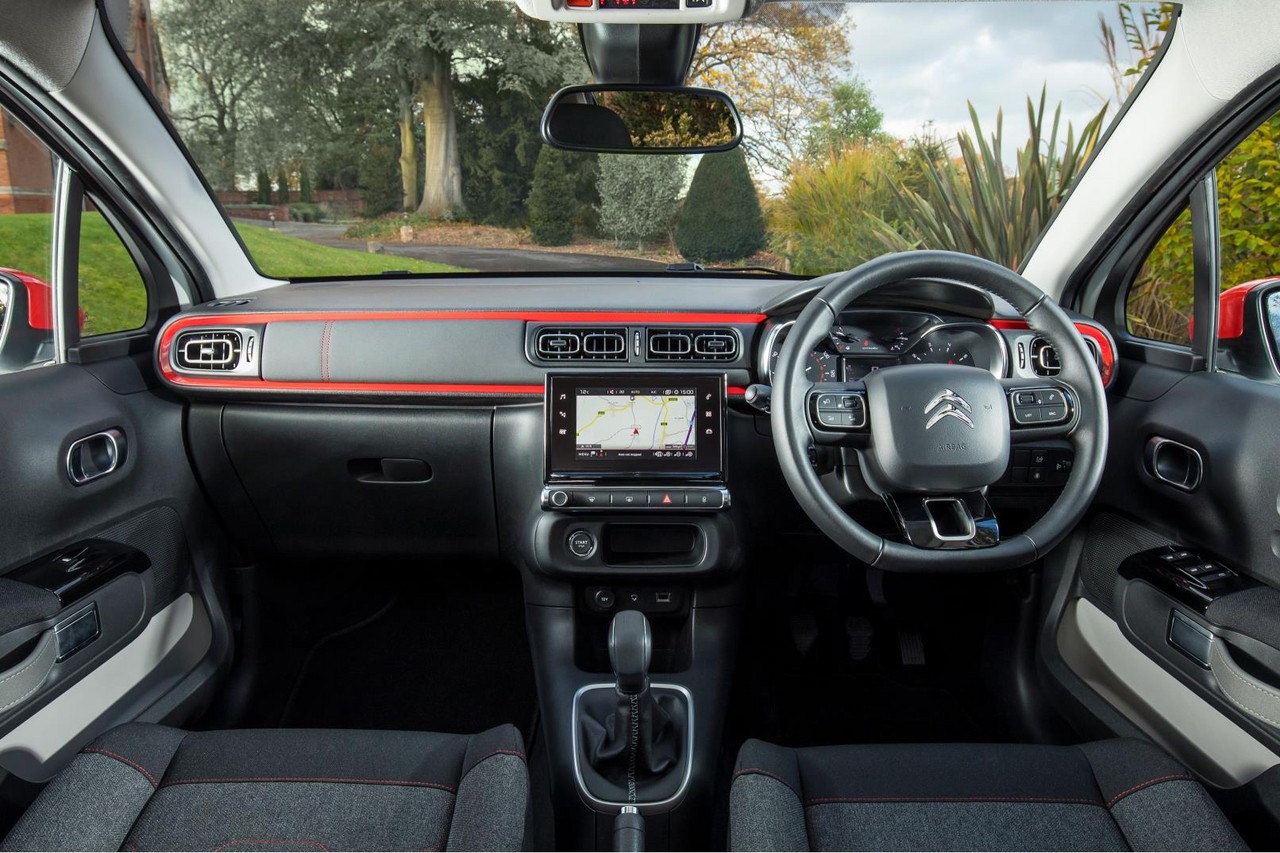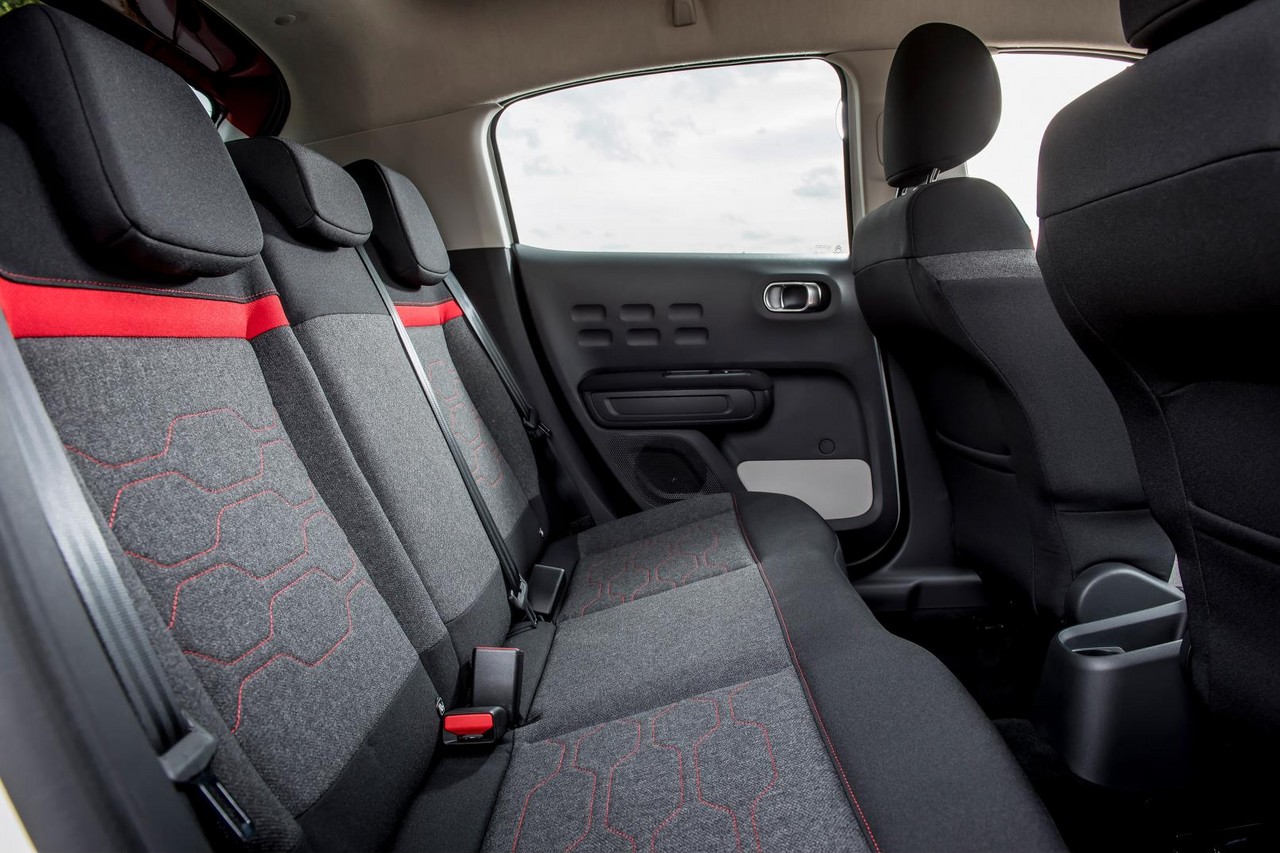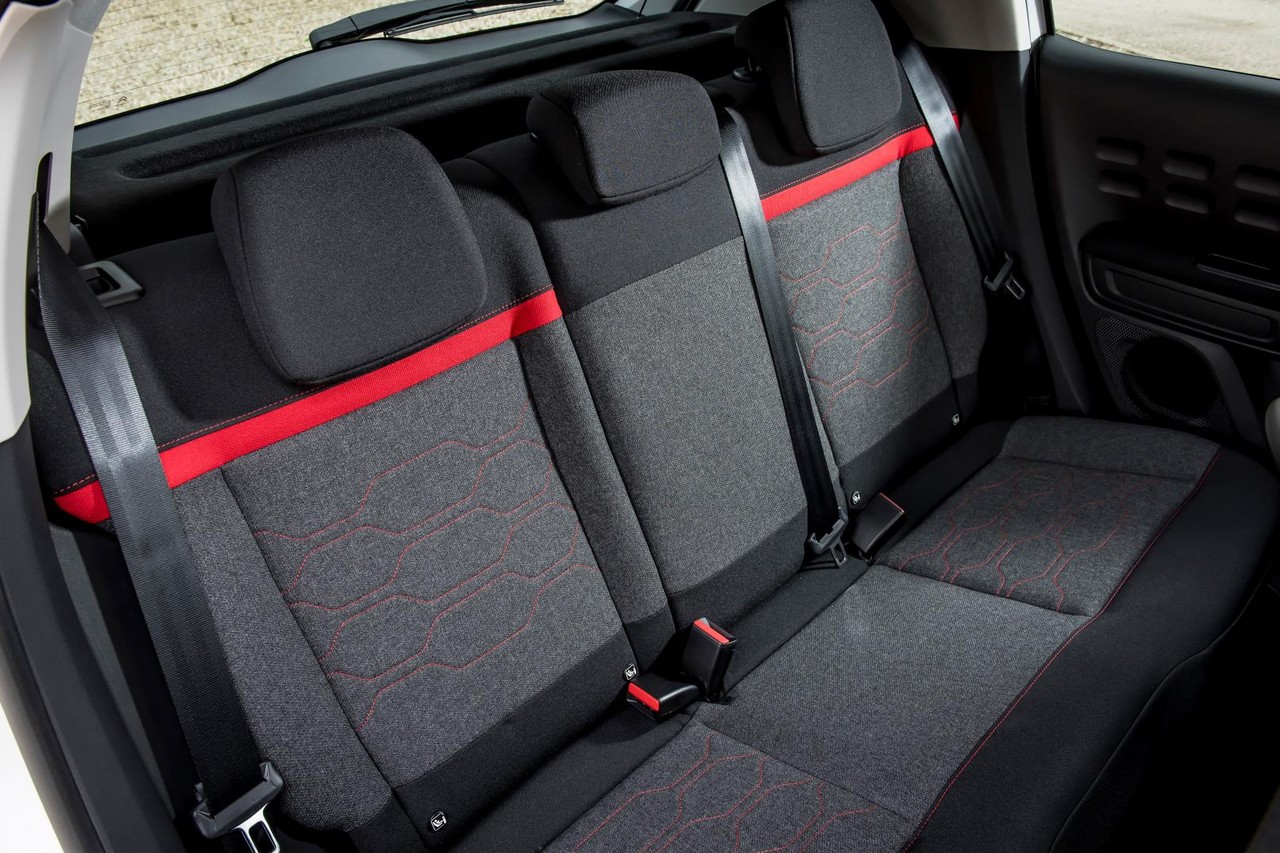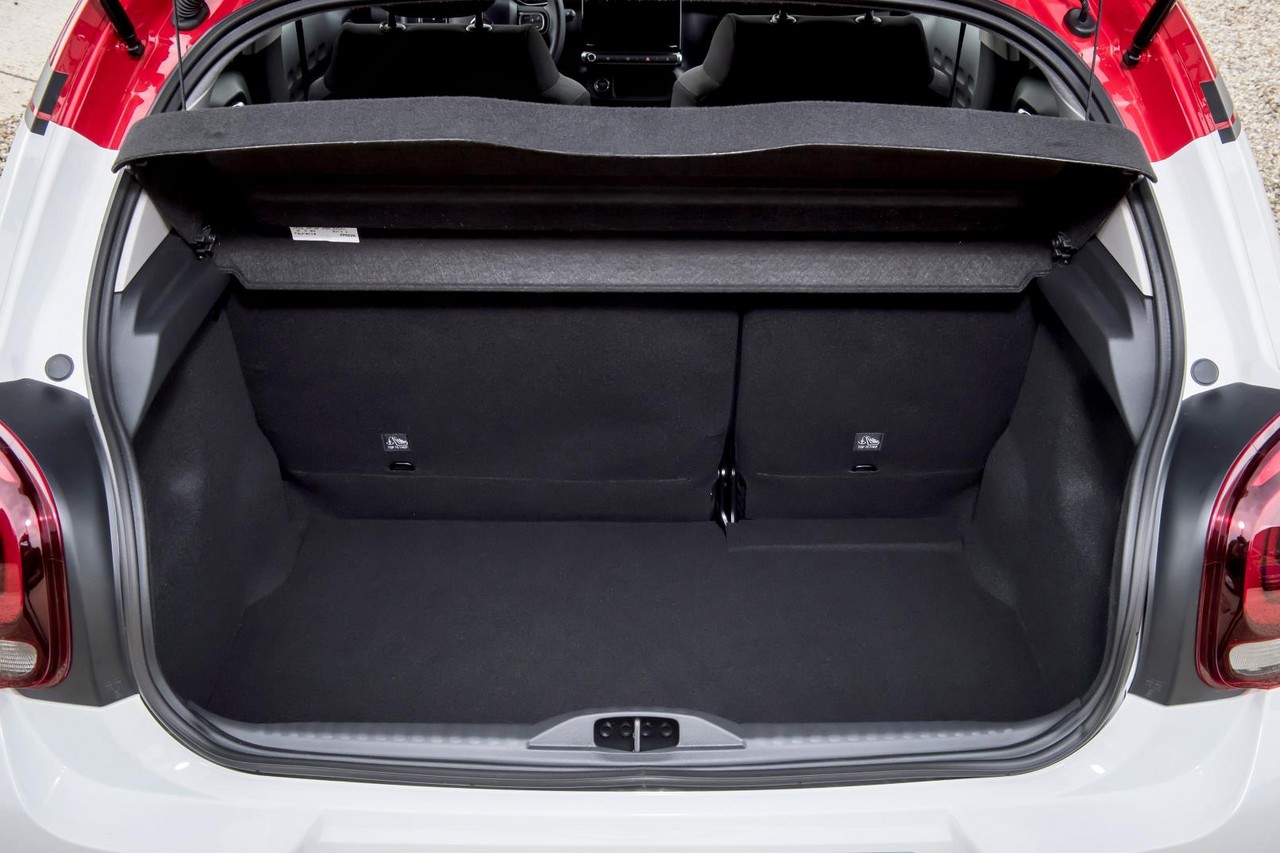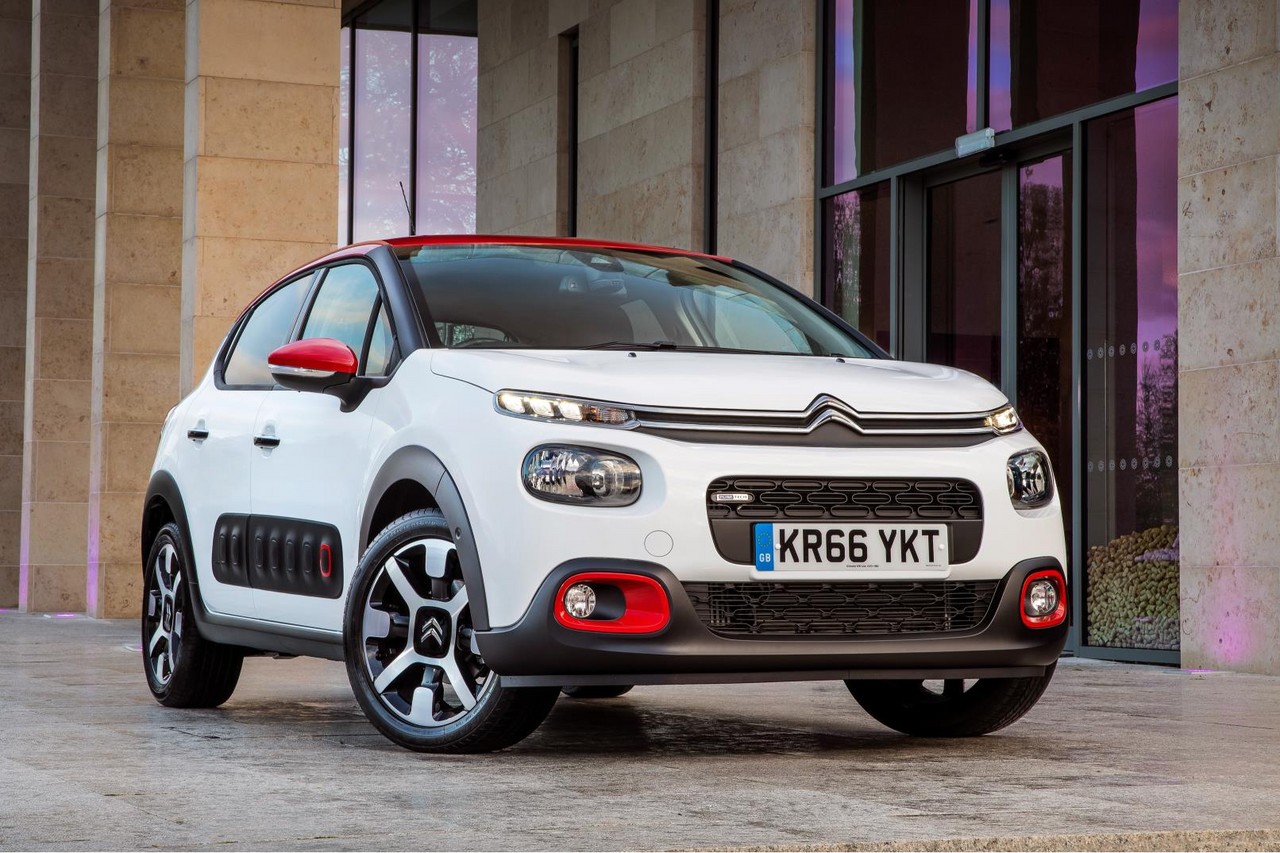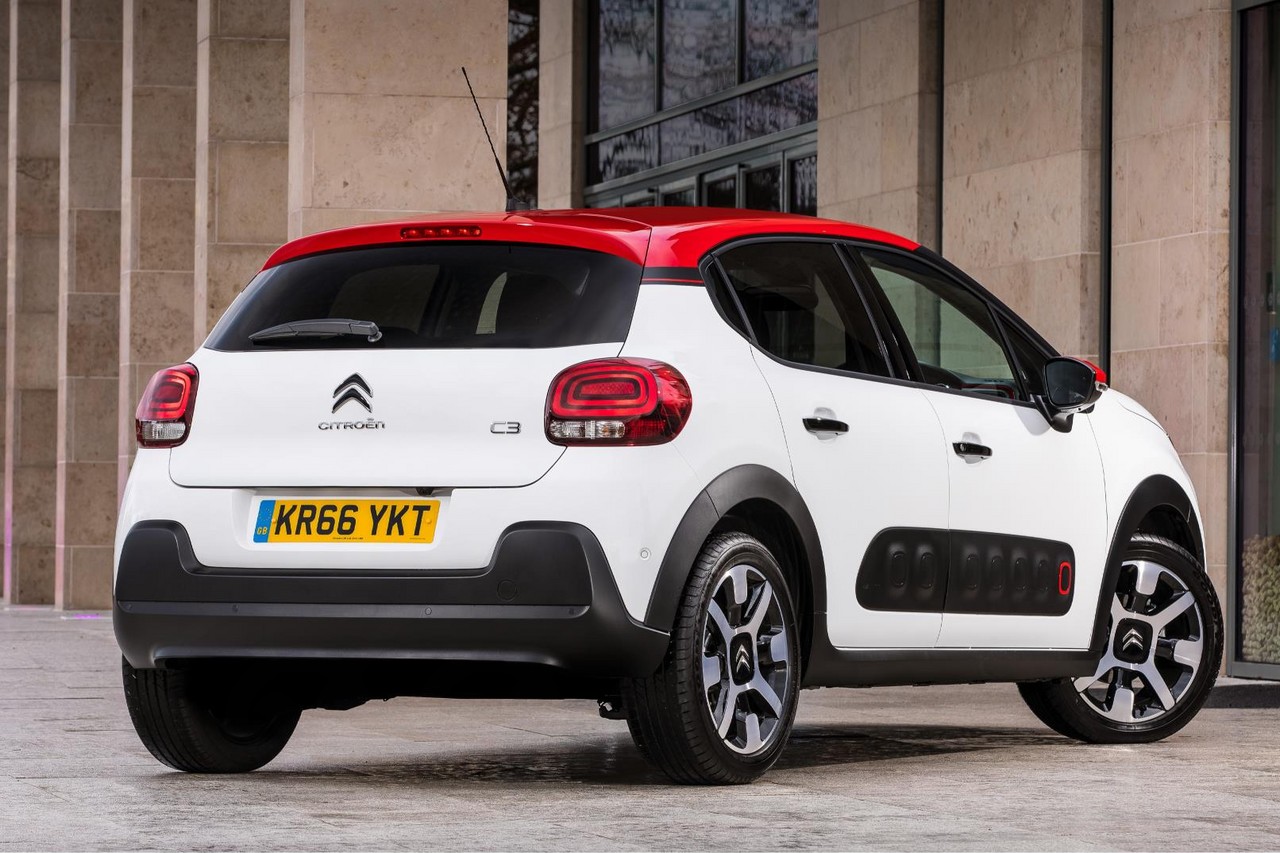
- Economical and willing 1.2-litre turbo I3 engine
- Front seats have good thigh support
- Wide range of steering wheel adjustment
- Clear instrumentation
- Under-damped suspension is upset by bigger bumps
- Overly assisted steering lacks precision
- No Autonomous Emergency Braking or satellite navigation
- Making air conditioning controls accessible from the touchscreen is needlessly complicated
- Below average space for rear occupants
- High boot lip affects loading/unloading
- High retail pricing and any colour other than white is an extra-cost option
Review: Citroën Mk.3 C3 (2017-on)
Overview
Released in Australia in October 2017, the third-generation Citroën C3 was a light, five-door hatchback. Manufactured in Trnava, Slovakia, the front-wheel drive Citroën Mk.3 C3 was powered by a 1.2-litre turbocharged three-cylinder petrol engine that was mated to a six-speed automatic transmission. To reduce fuel consumption, the 1.2 PureTech engine had a ‘Stop&Start’ function which enabled it to shut down when the vehicle was stationary in traffic.
Upon its release, the Citroën C3 1.2 PureTech Shine had a recommended retail price of $22,990 (excludes on-road costs such as stamp duty, dealer delivery, registration and, where required, compulsory third-party insurance).
| Variant | Edition | Engine | Trans. | Peak power | Peak torque |
|---|---|---|---|---|---|
| 1.2 PureTech 110 S&S | Shine | 1199 cc petrol I3 | 6sp auto | 81 kW at 5500 rpm | 205 Nm at 1500 rpm |
Body and dimensions
The Citroën Mk.3 C3 was underpinned by PSA’s PF1 (or ‘A’) platform. Compared to the Citroën Mk.2 C3 , the Citroen Mk.3 C3 was 55 mm longer (at 3996 mm), 16 mm wider (1744 mm), 50 mm lower (1474 mm) and has an 88 mm longer wheelbase (2539 mm). Furthermore, the Citroen Mk.3 C3 had an unladen weight of 1067 kg (excludes driver).
The sides of the C3 were fitted with Citroën’s ‘Airbump’ panels which are made from thermoplastic polyurethane. According to Citroën, ‘each panel positions a line of air-filled bumps at the bottom of the doors to protect the most vulnerable areas of the car.’
Luggage capacity for the Citroën C3 was 300 litres, though this increased to 922 litres when the rear seats were folded down and the parcel shelf was removed.
Suspension and steering
The Citroën C3 had psuedo MacPherson strut front suspension and a torsion beam rear axle. The Citroën C3 had rack-and-pinion steering with electric power assistance; the steering wheel required 2.95 turns from lock to lock, while the turning circle was 10.9 metres.
Safety equipment
Standard safety equipment for the Citroën C3 included dual front airbags, front-seat mounted side airbags, full-length curtain airbags, ABS, electronic brake force distribution, brake assist, electronic stability control, traction control and front seatbelts with pre-tensioners and load limiters.
As standard, the Australian-delivered Citroën C3 was equipped with the following safety technologies –
- Lane Departure Warning System (LDWS): LDWS operated at speeds above 65 km/h and, if the Citroën C3 crossed into another lane without the indicator having been being activated, would issue visual and audible warnings to alert the driver;
- Driver Attention Alert: warned the driver when it was time to take a break – i.e. after two hours of uninterrupted driving at speeds above 70 km/h, then every hour thereafter;
- Speed Limit Recognition: could recognise speed limits and display them to the driver on the dashboard; and,
- Active Seatbelt Safety System (seatbelt reminder).
Euro NCAP testing
In Euro NCAP testing , the 2017 Citroën C3 received a four star safety rating which included an 88 per cent adult occupant protection rating and an 83 per cent child occupant protection. In the pedestrian safety and safety assist categories, however, the Citroën C3 was rated at 59 and 58 per cent, respectively. In the frontal offset test, protection of the front occupants was generally rated as good, though lower leg protection for the driver and chest protection for the front passenger were rated as adequate (i.e. a slight risk of serious injury). While maximum points were awarded in the side impact test, chest protection was rated as adequate in the more severe pole test.
Brakes
The Citroën Mk.3 C3 had 266 mm by 22 mm ventilated front brake discs and 269 mm by 9 mm solid rear discs.
Features: Citroën C3 Shine
Standard features for the Citroën C3 Shine included 6.5J x 17-inch diamond-cut ‘Cross’ alloy wheels with 205/50 R17 tyres (and a space-saver spare wheel), a seven-inch touchscreen with voice control, a four speaker sound system with a digital radio tuner (DAB), auxiliary 3.5 mm and USB inputs, Bluetooth mobile phone connectivity and audio streaming, ‘Ambiance/Grey Mica’ cloth upholstery, automatic air conditioning, cruise control with speed limiter, halogen headlights, LED daytime running lights, static cornering fog lamps, dusk-sensing headlights, rain-sensing wipers, rear parking sensors, a reversing camera, 2/3 to 1/3 split-folding rear seats, remote central locking, power mirrors, front power windows, a height and reach adjustable steering wheel, a height adjustable driver’s seat, an electrochromatic rear view mirror, rear privacy glass, a 12 volt power socket, tyre pressure monitor, a trip computer and an immobiliser.
The C3 was equipped with Citroën’s “Mirror Screen’ which duplicated smartphone content onto the seven-inch touchscreen and via Apple CarPlay, Android Auto and MirrorLink.
ConnectedCAM Citroën
Available as a $600 option, the Citroën C3 could be specified with ‘ConnectedCAM’, a fully integrated camera that had a 120 degree angle range, full HD and 2 MP resolution. The camera was positioned between the windscreen and the rear view mirror, and could be used to capture images and video. Specifically, the driver can click or press a button to use the camera to take photos or video, respectively, with stored content accessible via the ConnectedCAM Citroen app. In the event of a vehicle collision, the video system would switch on automatically and could run for up to 90 seconds.
Paint finishes
As standard, Australian-delivered Citroën C3 vehicles had a Polar White paint finish and an Onyx Black roof. Beyond this, however,
- The Almond Green solid paint finish was a $290 option; and,
- The Power Orange, Cobalt Blue, Perla Nera Black, Ruby Red, Aluminium Grey, Platinum Grey and Soft Sand metallic paint finishes were a $590 option.
All roof colour options – i.e. Opal White, Onyx Black and Sport Red – were available as no-cost options.
Specifications
